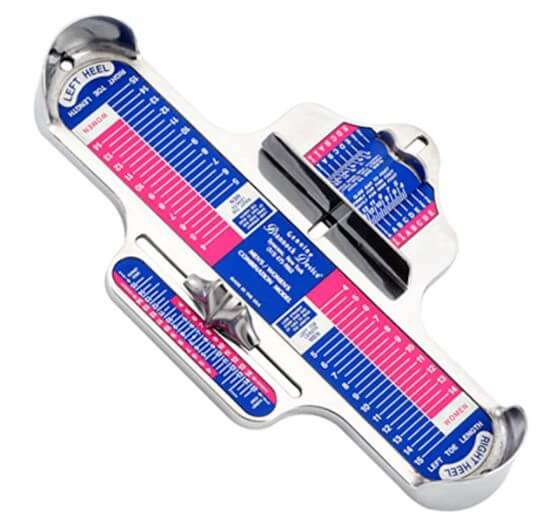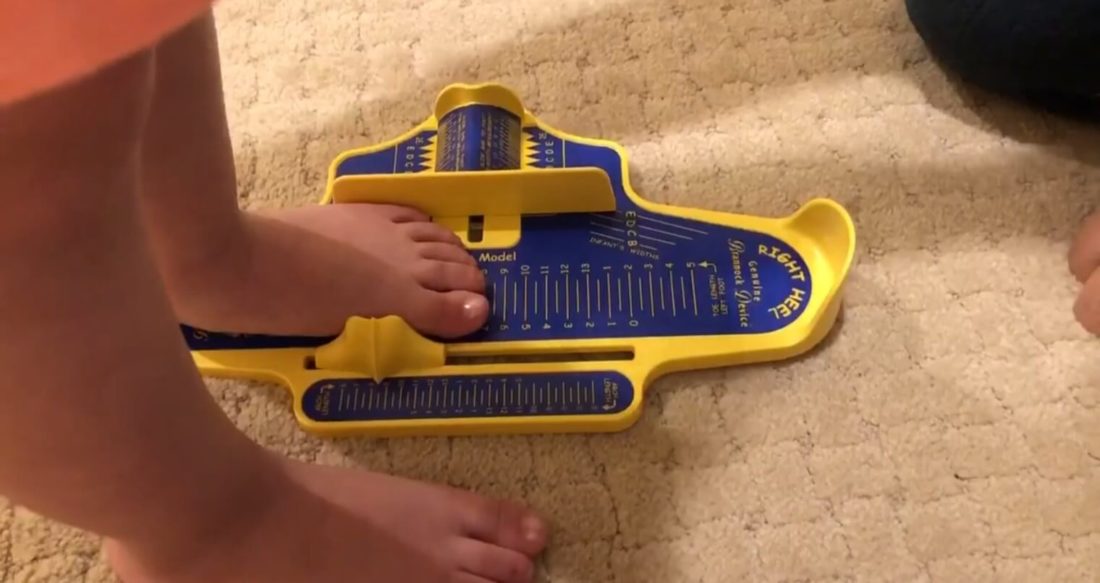
Finding correctly suited shoes is the first step to great foot health. This can only be done by using our thorough foot measurement guide to measure your foot properly.
Several common foot issues, including callouts, bunions, and blisters, may be prevented if the footwear is correctly fitted and not too large. How is the right pair of shoes to be found? The very first step is to know how to measure your feet correctly, so each time you are confident you will make the perfect shoe size.
Let’s start with the basics of operating your own Brannock Device so you can be confident that you are getting the right results.
Step 1: Heel-to-Ball Length
Were you aware that two feet of the same length could really require different size shoes? Solely because the length between the heel and the foot is as vital as the length between the heel and the toe tip.
People with short toes require different sizes of shoes than those with long toes, although they have the same overall foot length. The reason is, shoes are intended to bend on the football and support the arch. If your foot and shoe don’t flex in the same position, your arch is not supported correctly, so that stretched feet or dots are restricted to odd places.
Step 2: Preparation for the measurement of your feet and Brannock
Start with the measurement procedure by setting the width bar of the Brannock gadget to its widest position and moving the arch length indication backward to allow you to place your foot comfortably.
Begin walking distance from your feet and your weight will be evenly distributed with a single foot. Make sure your heel is tight at the rear of a cup of the heel.
Step 3: Start measurement of the first foot
The Brannock device helps you identify three particular measures. This is your heel to the longest of your toes, your ball length, and the breadth of your foot. Before going to width, the first two measures are considered.
1. Heel To Longest Toe Length
Press your toes to the Brannock gadget and examine the longest toe (which may or may not be your big toe). Your heel-to-toe length is the number displayed. Binding on the heel to the toe just might lead to a poor fit, so be sure that you don’t miss the next stages.
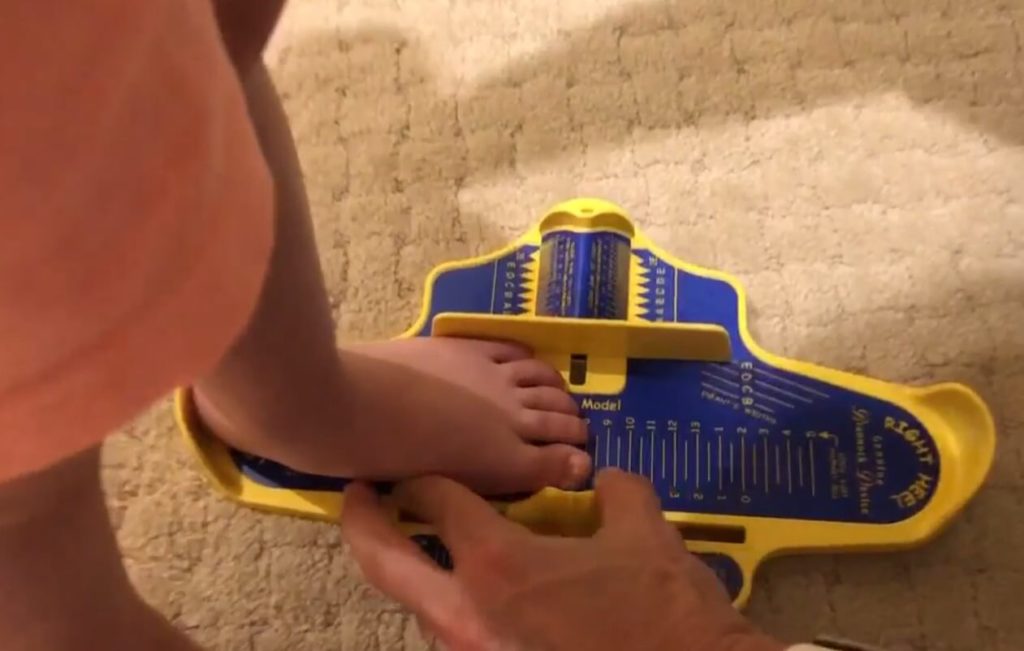
2. Heel To Ball Length:
Turn the tiny pointer forward on the side of the gadget until the curve inside fits your football joint. The point is correctly positioned when the bottom middle rib is on the side of your foot right against the joint. Measure the length of the head to the heel with the length of the ball. Often the larger the two is the right size.
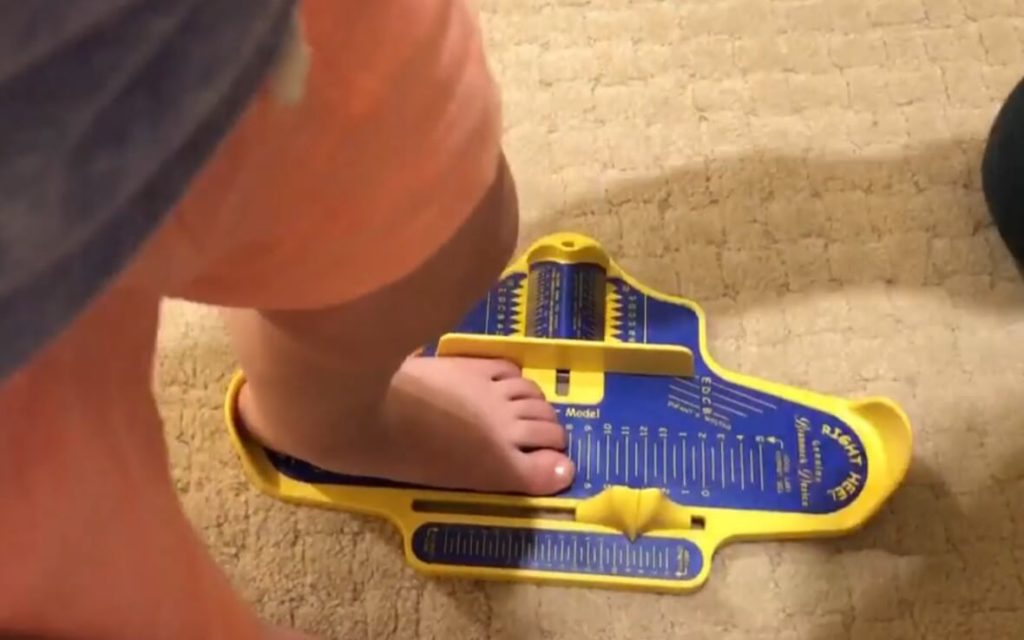
3. Foot Width Measurement with a Brannock
Move the width bar of the gadget carefully to the edge of your foot when you have calculated the correct shoe size. Put your shoe on the bar and see the width measurement that matches the size.
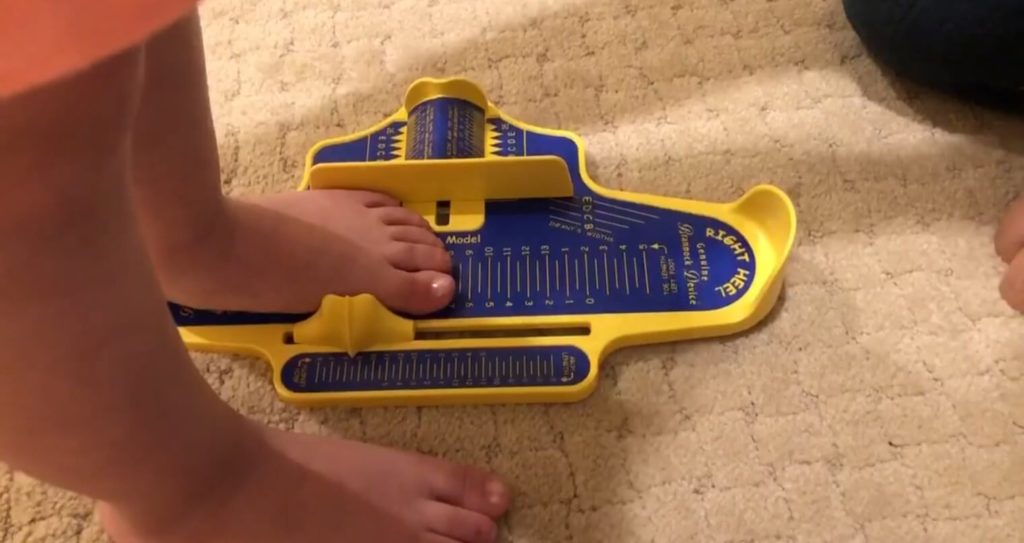
Picture credit goes to Brannock Device Foot Measurers
Step 4: Measure Your Other Foot
So it is normal for feet of various sizes, the Brannock device must completely measure both feet. You must pick shoes that fit in the larger ones if the sizes are different. Also note that each time you buy shoes, you get your feet measured. Whether you believe it or not, with age, weight changes, and other variables, the size of your feet varies.
Example
We utilized the Brannock gadget to determine one of our female tester’s foot lengths to be 7.5, arch lengths to be 8.5, and foot breadth to be B/C.
Her foot length is exactly 7.5, according to the bars. Her breadth ranges from a B to a C, and her arch length is 8.5.
Where she can physically fit into a 7.5 shoe, she will most likely feel good in a size 8. When testing on shoes, a good beginning point is to divide the difference. I’d bring outsize 8s and 8.5s for her to check on if I were the staff on the floor. Keep in mind that fit allows enough room for the toes to do not come into contact with the front, top, or sides of the shoe. The heel is securely in place, with no heel lift or forward motion, and no loose side-to-side motion.
Following that, we examined the foot of a male tester. His left foot measures 10.5 inches in length, C/D breadth, and roughly 12 inches in arch length.
His right foot measured somewhat more than 11 inches in length, C/D breadth, and 12.5 arch length.
Actually, he could wear a size 11 shoe, but he fits much better in a size 12. The Oboz O FIT insole keeps his foot in position, flexes in the right area, and is pleasant.
Tips On Fitting:
- Suppliers may use keywords like narrow, broad, normal, extra wide (and more) to specify a width size. These terms are not uniform. Because footwear manufacturers can use these words at their choice, it can be difficult to establish how the Brannock width measurement you take corresponds to a manufacturer’s standard. To obtain precise recommendations on sizing the shoes, contact the shopper or manufacturer.
- Shop in stores that give service and skilled salespeople to their consumers. It takes more than a shoe to have correctly fitting footwear and the sales associates to boost your sales
- Make sure you measure both feet. A lot of people have feet of various sizes. Passes to the two bigger. Every time you buy shoes, get your feet measured and fitted. With aging, weight fluctuations, and other things, your foot size varies. You possibly didn’t have the proper shoe size at school.
- Fitting for footwear should take place around the same time that you will be wearing it. When it comes to daily footwear, your feet have enlarged from being on your feet all day.
- Shoes are not pliable. If they don’t feel right at the moment of purchase, they probably won’t feel right ever again.
- Long-term foot issues can be avoided with properly fitting footwear.
- Take your time tying and lacing the shoe properly, then walk around in it while trying it on.
Resources: Brannock.com
Cleaning
- Clean the Brannock device with a wet towel.
- If required, use a liquid dishwasher.
- Do not use sprays or disinfectants, since the measurement regions of the device may be negatively affected by them.
Get A Brannock To Measure Your Correct Foot Size
